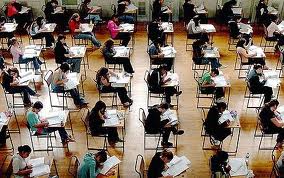Recent research has suggested various ways in which girls outperform boys in high school, making them more likely to go to college: stronger desire to get good grades, better social skills, greater validation from academic performance.
stronger desire to get good grades, better social skills, greater validation from academic performance.
But as Inside Higher Ed reports, “A new study suggests gender sorting — a boy’s or girl’s decision to attend one school or another – could have its own effect on the college enrollment gap.
“In a study of public school systems in Florida, researchers found that what high school a student attends is “strongly associated” with college enrollment; girls are attending high schools that have higher rates of college-going than one would expect based on the students’ test scores – and boys, vice versa.
“Over all, the high school that boys and girls attended accounts for 10.9 percent of the gender gap in college enrollment – in other words, 11 percent of the approximately 7-percentage-point nationwide gender gap in colleges is attributable to the high school attended — but the figure is significantly higher for black (15.8 percent) and Hispanic students (12.2 percent) than it is for white students (5.2 percent).
“While the paper does not make a causal link – it’s not clear whether the high schools themselves are causing the gaps – if it is the high schools having this effect on the students, one would conclude that equal gender distribution across high schools would close the college gender gap by 11 percent.
“Either girls are choosing to attend high schools that are going to advantage them by making them more likely to go to college, or girls are simply attracted to high schools whose students have higher college-going rates — even if the school does not cause this outcome — while boys are attracted to other features of high schools,” such as facilities or the characteristics of the school’s students, said Mark C. Long, co-author of the paper published in Educational Researcher and associate professor of public affairs at the University of Washington.
“The sample includes nearly 537,000 students who enrolled in a Florida public high school between 2002-6 and graduated within four years. While not every student has the ability to choose which high school to attend — say, private, traditional public, or charter — there is often some element of choice involved, either by the student selecting from a group of residential schools or a parent opting to live in a certain neighborhood.”
Read more: http://www.insidehighered.com/news/2013/09/05/how-boys-and-girls-choice-high-school-affects-college-gender-gap#ixzz2eFOz1gAH
Inside Higher Ed
